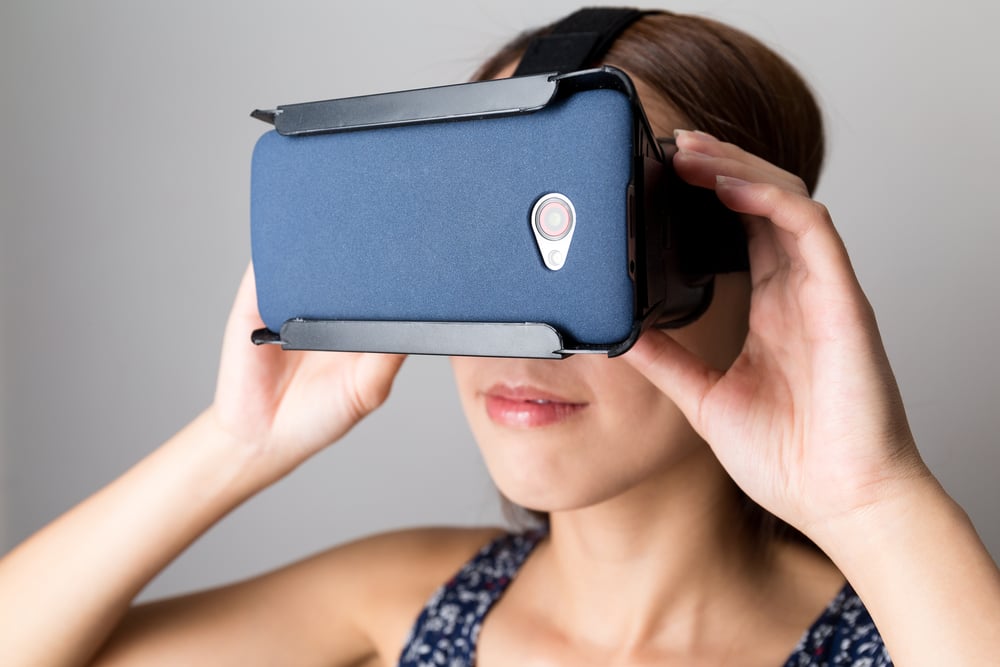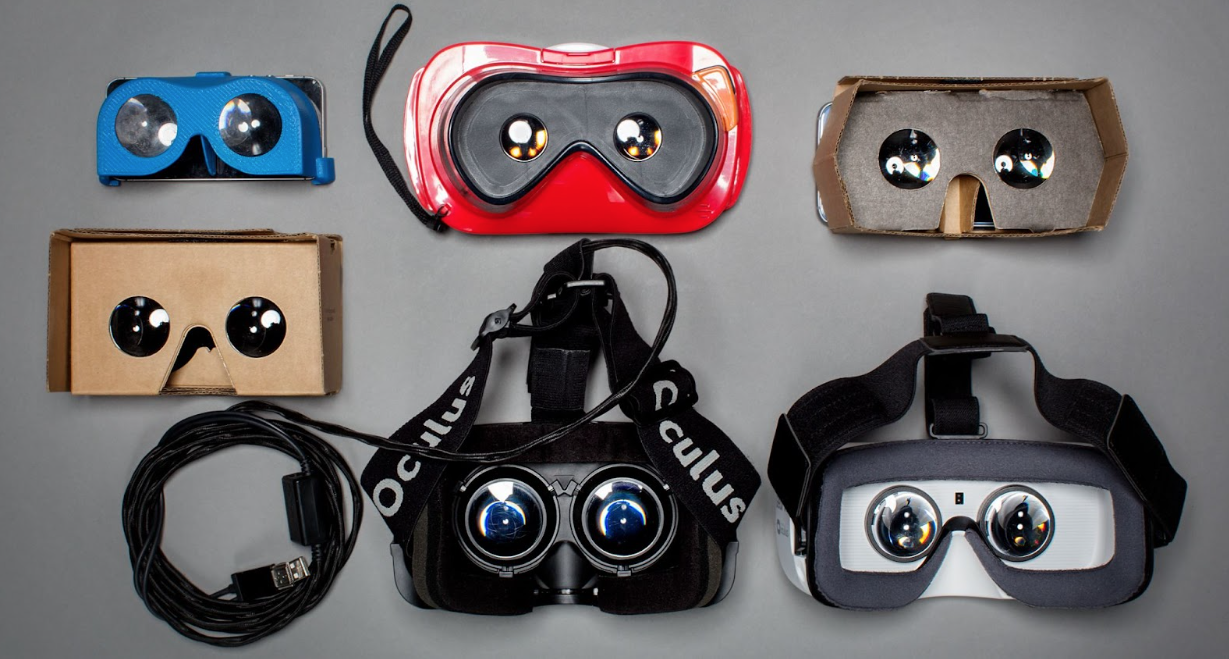The Rise of VR Headsets
What is a VR Headset? A VR headset is a device worn on the head that’s used to experience virtual reality (VR). It uses a combination of lenses and...
Tonic3 develops and executes strategies that drive profit through Digital Transformation. Practically that means we are built to help clients hone the right strategy, implement the right technology, and build the right long-term capabilities to deliver lasting transformation.
Industries
We believe that effective technology helps people succeed in their daily lives. So we help our clients engineer useful technology for their clients, partners, and employees. That translates to every major industry, but over the years we’ve developed several core areas of expertise.
6 min read
Augusto Gómez
:
Nov 24, 2021 9:44:49 PM

Despite being a relatively nascent technology, the adoption of virtual reality in companies, organizations and even governments around the world has become widespread as its potential becomes clearer with each new development.
But what is virtual reality, what benefits does it bring and what sectors are driving its growth? If you are looking for answers to these questions and more, you have come to the right place.
In this article, you'll learn ten VR statistics you need to know to get ahead of 2022. From growth numbers to future VR forecasts on the global economy, we've got you covered.
But first: Are you interested in Virtual Reality? Let us help you and show you how you can implement Virtual Reality Services in your projects!
Before we move on to the statistics, let's quickly see what virtual reality is.
Virtual reality is more or less what its name suggests. It is a three-dimensional environment created digitally generated using advanced computer technology. It places users in a simulation and allows them to immerse themselves in another world.
This is done using special devices such as headphones, glasses, gloves and more, which allow users to explore and interact with these virtual worlds and their elements.
Now let's see how popular virtual reality has become and some of the factors driving its growth.
To start with, let's take a look at the size of the industry market.
Global market size for AR and VR reached USD 30.7 billions during 2021. Also, the augmented reality (AR) and virtual reality (VR) market has the potential to grow by USD 162.71 billion during 2021-2025 (Statista, 2021). This is more than three times the size of the $ 6.1 billion market recorded through 2016.

The forecast for 2020 is also a huge 79 percent year-over-year increase, showing just how popular the technology has become in recent years.
Although AR and VR devices are not yet as in demand as other electronic devices such as smartphones or smart watches, the growing size of the market is a clear indication of their potential. Many technology companies such as Microsoft, Intel, and Sony have invested heavily in the development and promotion of virtual reality.
As we will see in the next statistic, this growing popularity of virtual reality is likely to continue for at least a few more years.
Looking ahead, all signs point to an increase in the virtual reality market.
Between 2020 and 2027, the total annual growth rate in the market is expected to enter 21.6 percent (Grand View Research, 2020). In other words, the virtual reality industry is expected to grow an average of 21.6 percent each year during this seven-year period.
Bringing virtual reality to commerce has been particularly popular with businesses and organizations.
An example of this includes IKEA's â € ˜cooking experienceâ € ™ initiative, which allows customers to visit the store through a virtual reality viewer, without having to travel and be physically present.
Architectural firms around the world are also beginning to embrace virtual reality for the presentation of ideas. It offers an exciting hands-on level, as through technology they can deliver a 1: 1 scale model of their design to clients for a more immersive and visual experience.
Given the potential and benefits of virtual reality technology, it should come as no surprise that the demand for AR and VR headsets will gain more traction in the near future.
As it stands, 26 million of these devices are currently owned by private consumers. In addition, the units are expected to be shipped to customers around the world by 2020 (Statista, 2020).
That's not all: this number is expected to double to 11 million just one year later and rise further to 43.5 million by 2025. That would mean an impressive nearly eight-fold increase from 2020 to 2025.
Analysts attribute part of the 2020 AR and VR boom to the coronavirus pandemic, which has shut down the world and forced offices to close and employees to work from home.
Since contact is cut off with the rest of the world, many companies are using virtual reality technology for distance learning, meetings and even to deliver Customer Service.
The US market is no exception to this growth in virtual reality that is spreading around the world.
Nearly one in five (19 percent) of US consumers have used virtual reality in 2020, an increase of three percentage points from 16 percent in 2019 (AR Insider, 2020). Most users are also satisfied with the experience, and 55 percent of them say they are extremely or moderately satisfied.
Since content encourages repeat use, which is one of the biggest success factors, this is good news for the VR market.
However, not everything is fine and elegant. The barrier to using virtual reality remains particularly difficult to overcome. Consumers who do not use the technology say they are simply not interested in trying or discovering it, which will be a challenge for VR developers.
As more and more people in the United States buy virtual reality kits, use can be expected to increase along with them.
Shows the latest virtual reality statistics. 52.1 million people in the United States will use technology at least once a month by 2020 (eMarketer, 2020).
This is a 20.9 percent increase from 43.1 million in 2019. More and more US residents are also expected to start using virtual reality more frequently.
This number is expected to rise to 57.4 million in 2021 and further to 60.8 million in 2022. If the forecasts are true, it means that in the four-year period from 2018 to 2022, the number of people who use virtual reality each month has increased 75, 7 percent.
Experts also hope that virtual reality will bring financial benefits.
A recent analysis by leading consultancy PricewaterhouseCoopers claims that the technology is capable of injecting approximately $ 1.83 billion into the global economy by the end of this decade.
The report also predicts that virtual reality will lead to an increasing number of job opportunities.
Right now, there are less than half a million jobs around the world that are affected by virtual reality and / or augmented reality. All of this will change this decade, with as many as 23 million jobs having to use AR and VR in some way for training, meeting, and customer service purposes by 2030 (PwC, 2019).
The largest economies, including the United States, the United Kingdom, Germany and China, are expected to be the hardest hit.
The question then arises: What are some of the key drivers behind such impressive growth?
Sectors that have seen widespread adoption and increased demand for virtual reality include games and entertainment (Grand View Research, 2019).
With only one headset required to play a virtual reality game, it makes it easy and convenient for gamers to simply start the device, start it up, and be taken into a whole different world.
Entertainment companies have also been eager to implement the technology. These include the use of virtual reality holograms in theme parks in Thorpe Park, London, as well as the launch of Mario Kart VR by a video game development company.
Virtual reality is also particularly popular in the education sector, which includes its use to train doctors and flight pilots. Due to the nature of these jobs and the high cost of errors, the simulation that virtual reality allows makes it a practical solution since it allows them to practice in a safe environment.
Given the benefits of virtual reality in gaming, it should come as no surprise that more and more gaming companies are embracing the technology as demand grows.
In fact, global virtual reality in the gaming market is expected to grow rapidly over the next few years.
According to the latest virtual reality statistics, its market size is expected to reach $ 92.31 billion in 2027, marking a compound annual growth rate of 30.2 percent in the seven-year period between 2020. and 2027 (Grand View Research, 2020).
The biggest driver for this is expected to come from millennia, whose demand for high-tech games will force game developers to rely more on virtual reality to meet growing standards.
Although investments in virtual reality are expected from a large number of countries around the world, there are a few that will lead the pack.
Asian giant China tops this list with a forecast of spending at $ 5.8 billion on technology in 2020 (Statista, 2019). This is a significant amount. In fact, its projected spending represents 30.8 percent of the total amount ($ 18.8 billion) expected to be spent on virtual reality globally.
The United States is the second largest investor and is expected to spend $ 5.1 billion on virtual reality technology. Together, the United States and China will account for 58 percent of the global investment in virtual reality.
This is followed by the entire Western European bloc with $ 3.3 billion and Japan with $ 1.8 billion.
Because virtual reality is still a relatively new technology, there are only a handful of major players in today's market.
These key players include Sony, Samsung Electronics, Google, Microsoft, HTC, Oculus (owned by Facebook), Eon Reality, and a few others (MarketsandMarkets, 2020).
A quick look at the best VR headsets in 2020 from various reviews shows that these brands dominate the list of their products.
However, you can expect the big names to enter the playing field very soon. Leading technology company Apple is already preparing a headset that they plan to launch sometime in 2022. A smaller set of glasses is also expected to be sold the following year.
That's it for the most important VR stats. We hope you now have a better idea of where this technology and its potential are headed.
Given its progress in recent years, it is probably safe to say that it is only a matter of time before virtual reality takes over our lives.
If you want to apply the technology to your eCommerce store or be a leading seller of your devices, it is always better to jump sooner rather than later, so why not get it?
Are you interested in Virtual Reality? Let us help you and show you how you can implement Virtual Reality Services in your projects!

What is a VR Headset? A VR headset is a device worn on the head that’s used to experience virtual reality (VR). It uses a combination of lenses and...

As more organizations are forced to implement remote work policies and new digital technology in order to remain competitive in the wake of the...

The UX search application has become popular lately due to its huge usefulness. A complete analysis is offered below, covering everything from its...